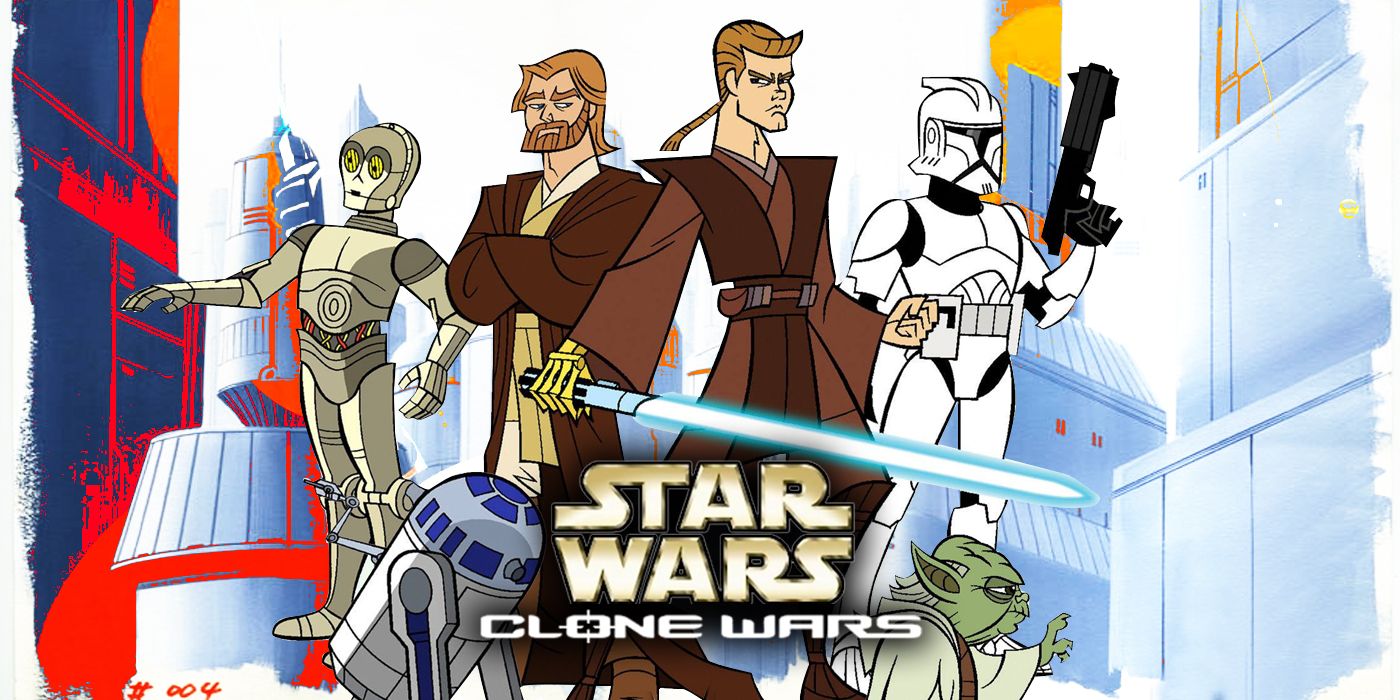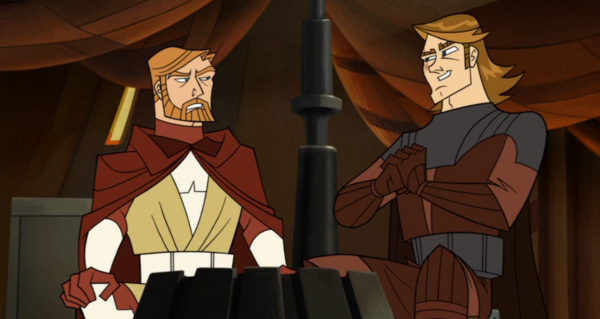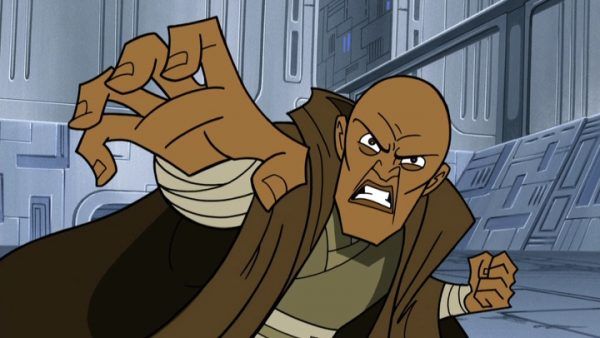When Samurai Jack creator Genndy Tartakovsky was first approached by Lucasfilm to produce an animated Star Wars series, it was at the request of the company’s action figure manufacturer Hasbro. Attack of the Clones had just debuted in theaters in May 2002, and Hasbro was keen to reap all of the merchandising potential of the “Clone Wars,” hinted at in the original Star Wars, in the marketing lead-up to Revenge of the Sith. Tartakovsky’s Clone Wars wasn’t supposed to be anything more than an extended toy commercial.
It became so much more. Clone Wars didn’t just bridge the gap between two other movies, but fleshed out the universe through an exciting new medium. Clone Wars made the prequel era exciting even for those unimpressed with George Lucas’s new trilogy, and it proved a Star Wars television show could work long before the countless projects currently in development. Although it's been wiped from the official Star Wars canon and only just been made available on Disney+, Tartakovsky’s Clone Wars was ahead of its time.
Star Wars had never had a strong television presence before, but Tartakovsky had seen the potential in the brief animated segment of The Star Wars Holiday Special and the early Droids and Ewoks cartoons. Without the plot requirements of a film, an animated show could reinvent the iconography and tell a more expansive story. Tartakovsky’s animation puts more emphasis on visuals than dialogue, and it better utilized the environments, planets, and tech designs from the prequels. Computer-generated armies of faceless clones and droids felt awkward placed alongside live-action characters in the film, but the widespread conflicts were creatively staged in the fast-paced animated format.
While the relationship between Anakin Skywalker and Obi-Wan Kenobi is at the heart of Clone Wars, it isn’t the singular focus, as other heroes and villains took turns in the spotlight. Tartakovsky structured the series into bite-sized adventures, with the first two seasons released as 3-5 minute installments and a third season extended to longer 12-15 minute episodes. The approach showed snapshots of events throughout the intergalactic conflict between the Galactic Republic and the Confederacy of Independent Systems. The universe felt more expansive; if Attack of the Clones implied that the galaxy was thrust into chaos during senate committee debates, Clone Wars showed the devastating impacts that they actually have.
The anthology approach benefited side characters better suited for a brief adventure. The show didn’t need to flesh out a character like Kit Fisto beyond the fact that he can breathe underwater and has a cool smile; all it needed was an unusual character to lead an inventive underwater action sequence. A character like General Grievous felt oddly inserted as another last-minute antagonist in Revenge of the Sith, and he’s better utilized as a slasher-like relentless force.
Clone Wars also gave underserved characters something to do, even if they were (ironically) two-dimensional in the films. Count Dooku was never a truly distinguishable threat despite Christopher Lee’s charismatic performance, but Clone Wars depicted him as a more theatrical swindler that pitted potential acolytes against each other in a cruel battle royale. Samuel L. Jackson’s Mace Windu was spotlighted in one episode that showed why he was worthy of sitting at Yoda’s side, as he bare-knuckle boxed droid invaders. The exaggerated force abilities (Windu dispatches with countless combatants) would’ve felt out of place in a live-action film, but they’re effective in the niche animation of Clone Wars.
The Star Wars prequels had shown Anakin Skywalker’s fall from grace, but Clone Wars actually detailed the tragedy without rushing between plot points. In Attack of the Clones, Obi-Wan Kenobi is a stern instructor who frequently scolds his younger apprentice, yet by the time of Revenge of the Sith’s opening sequence they’re assumed to be best friends. Clone Wars showed how the dynamic shifted as the two grow closer in the heat of combat and Kenobi takes pride in his student’s ascension to Jedi Knighthood. There’s also time away from the action for the two to converse and eat weird food, an intimate moment of connection the prequels had largely lacked.
The freedom of animation captured Anakin’s descent into darkness vividly. Anakin’s duel with Sith novitiate Asajj Ventress is told across the four concluding chapters of season two in one of the saga’s longer extended duels. As the blue and red sparks fly, Anakin’s combat becomes more brutal, ending with a haunting shot of Anakin holding a red lightsaber and screaming in primal rage. The third season grew even more experimental, with a haunting dream sequence in which primitive cave sketches foreshadow the rise of Darth Vader, inspired by Luke’s cave vision in The Empire Strikes Back.
Clone Wars certainly laid the groundwork for Dave Filoni’s The Clone Wars film and television series in 2008, as The Clone Wars also benefited from exploring different corners of the universe. Tartakovsky had shown that the prequel era had compelling elements worthy of another interpretation. The two projects are complimentary, but distinguished; Filoni’s The Clone Wars had over one hundred 22-minute episodes to developed ongoing storylines focusing on the return of Darth Maul, the development of the clone troopers, and Anakin’s fractured relationship with his padawan Ashoka Tano. Tartakovsky’s Clone Wars is a digestible highlight reel that's three seasons add up to just about two hours. Both shows lead perfectly into Revenge of the Sith; Filoni wrapped up with a storyline that runs concurrently with the film’s events with original characters, and Tartakovsky concluded following Anakin and Obi-Wan right into the opening shot.
Clone Wars is a striking piece of standalone animation that doesn’t require comprehensive knowledge of the universe. Less concerned with plot than it was with characters and theme, it's essential viewing even if it's not part of any “official” timeline. As Star Wars content continues to stack up within the Disney+ archives, Tartakovsky deserves credit for taking what was pitched as a marketing ploy and creating a groundbreaking work of art.



